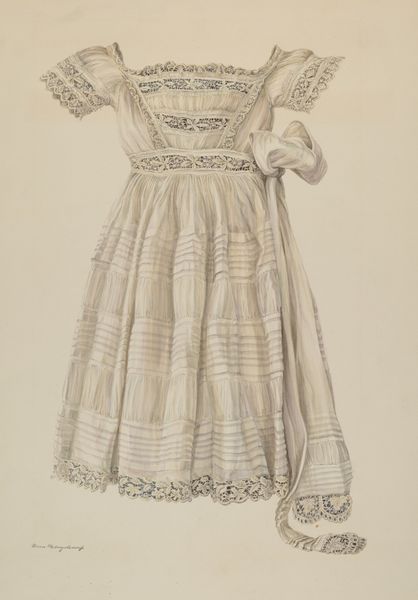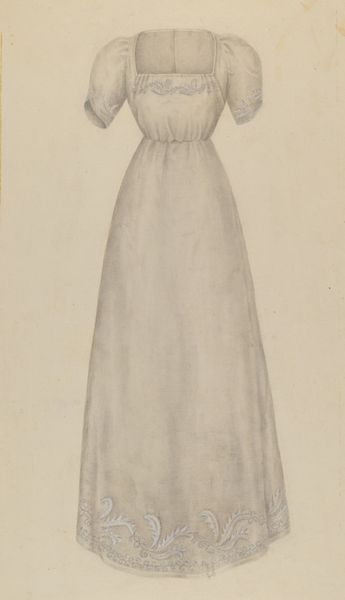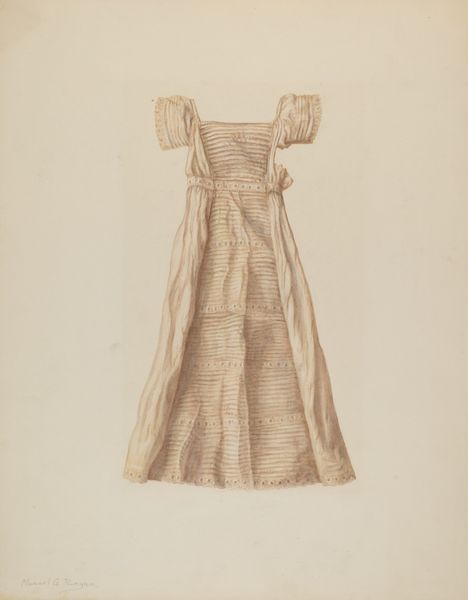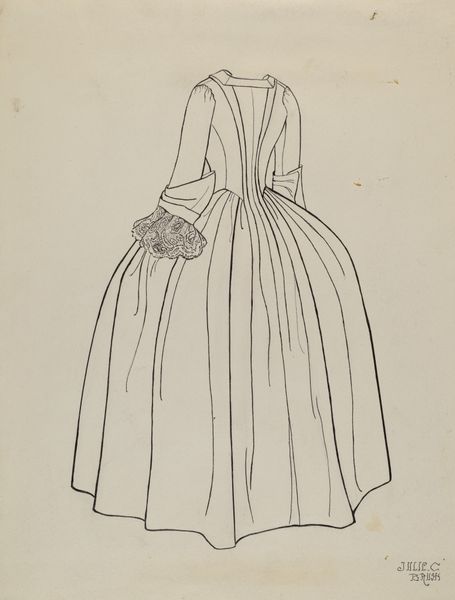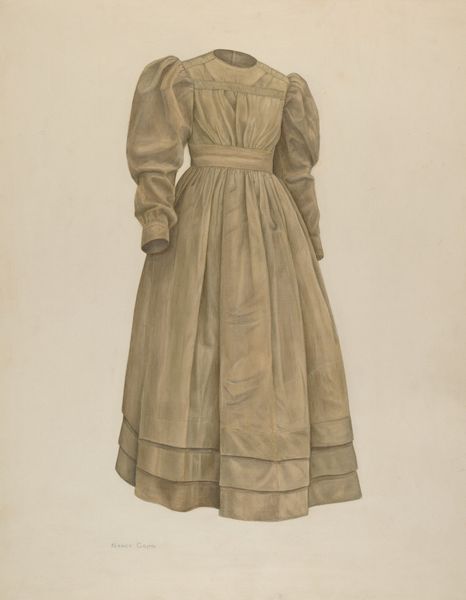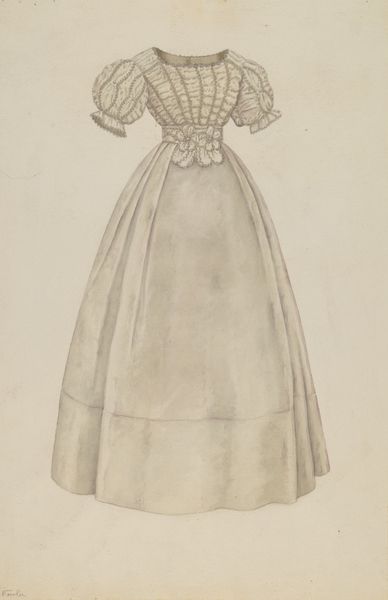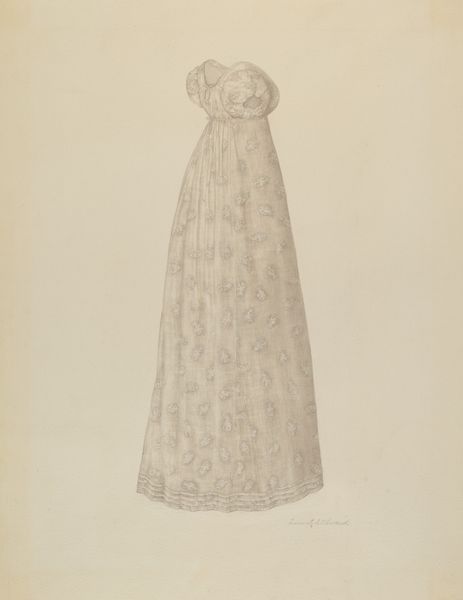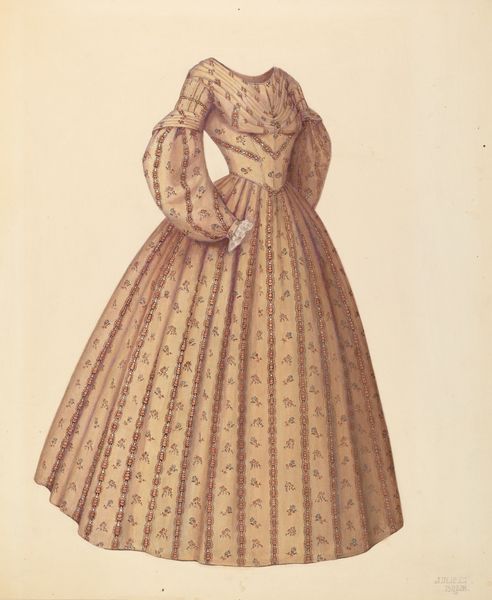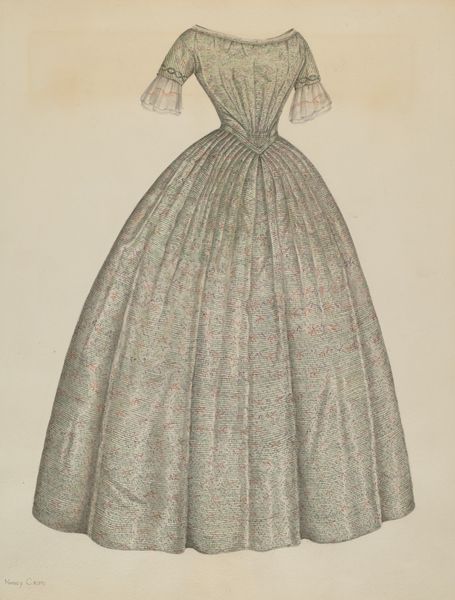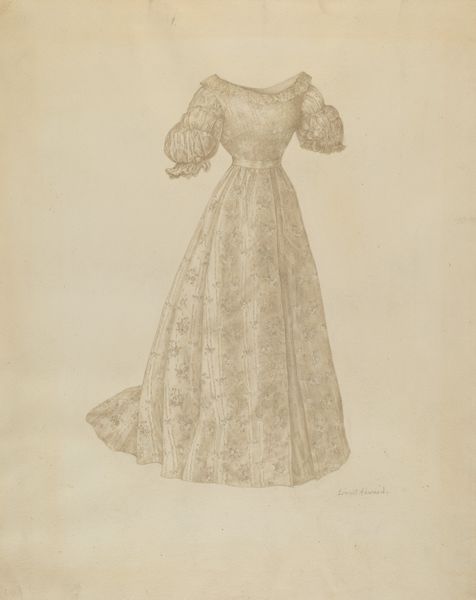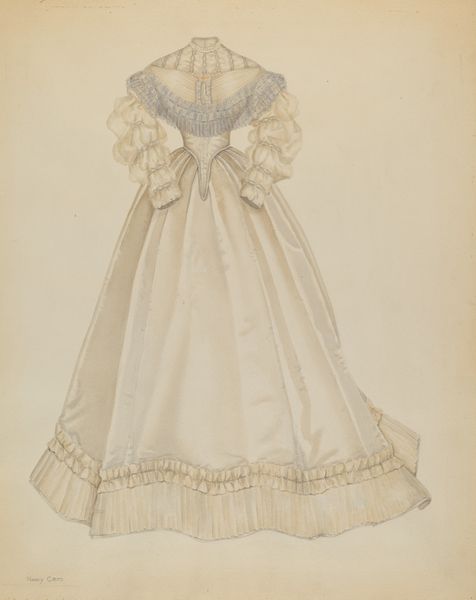
drawing, paper, pencil
#
drawing
#
paper
#
pencil drawing
#
pencil
#
genre-painting
#
realism
Dimensions: overall: 46.9 x 36.2 cm (18 7/16 x 14 1/4 in.)
Copyright: National Gallery of Art: CC0 1.0
Editor: This is Nancy Crimi's "Girl's Dress," a pencil drawing on paper created sometime between 1935 and 1942. There's a certain quietness to it. The delicate details suggest a tenderness, but it's also a bit melancholy, perhaps because an empty dress makes me think of absence. What do you see in it? Curator: That's a perceptive reaction. I am struck by the dress itself as an archetypal symbol. Garments often act as second skins, laden with cultural and personal memory. During the period it was drawn, clothing signified social standing, but it could also suggest a personal narrative – perhaps the girl's dreams or aspirations. Notice the repeating floral motifs... what might those tiny blooms symbolize? Editor: Innocence? Maybe youthfulness? It seems appropriate for a girl's dress. Curator: Precisely! But consider also how clothing has functioned historically as a signifier of identity. This dress, so carefully rendered, might evoke the complex role clothing plays in constructing self, especially during formative years. It's a fascinating lens through which to examine themes of memory and identity formation. Why do you think Crimi chose this specific item to depict? Editor: Maybe it held special significance to her or someone she knew? I never considered how much a simple garment could hold. Thanks for pointing that out! Curator: The beauty lies in such objects holding resonant human connections. The simplicity, however, carries echoes of the past that stay with us, influencing perception, belief, and action in unexpected ways.
Comments
No comments
Be the first to comment and join the conversation on the ultimate creative platform.
